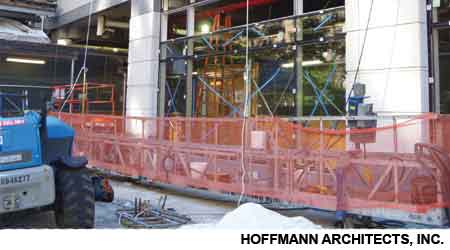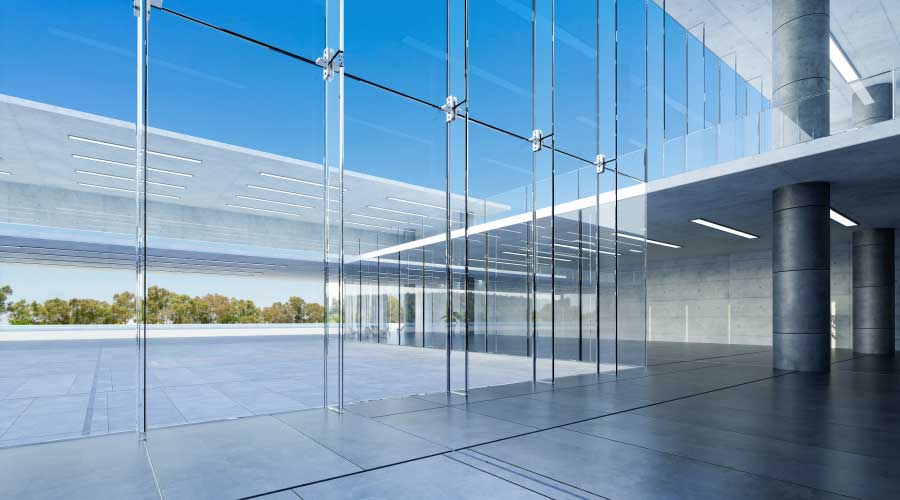Addressing Solar Heat Gain, U-Factor in Window Design
Second of a 4-part article on reaping the energy and cost benefits of window replacement
For windows, energy efficiency is broadly defined by two qualities: solar heat gain coefficient (SHGC) and thermal transmittance (U-factor). The first of these, SHGC, is defined by ASHRAE 90.1-2010, the reference guide that has become the national standard for energy performance, as: “The ratio of the solar heat gain entering the space through the fenestration area to the incident solar radiation.” SHGC is a measure of how much of the sun’s heat is transmitted into the building interior through the windows.
In the past, maximum reduction of SGHC was not considered optimal for buildings in cold climates, since solar energy could help heat the building during the winter. However, due to inherent inefficiencies in building enclosures, the industry has largely revised its thinking on this issue, and recommendations now favor a reduction in SHGC across climate zones.
The other major determinant for energy efficiency in windows, U-factor, is defined by as ASHRAE 90.1-2010 “heat transmission in unit time through unit area of material or construction… induced by a unit temperature difference between the environments on each side.” A measure of a material or assembly’s propensity to transmit energy, U-factor is the inverse of R-value, which measures ability to resist energy transfer. Window manufacturers’ data should provide whole assembly U-factor values, including both frame and glass, rather than center-of-glass U-factor values, which tend to make the window seem more efficient than it is.
SHGC and U-factor can be reduced in the glass portion of a window assembly in a number of ways:
• Low-emissivity (low-e) coatings reduce the ultraviolet and infrared light that passes through the glass, limiting heat gain while preserving visible light transmission.
• Window tinting cuts down on solar heat gain and glare but may reduce visible light transmission by blocking part of the visible spectrum. Highly reflective coatings on tinted glass can limit visible light transmission to less than 10 percent, compared with over 90 percent for uncoated clear glass.
By balancing desired levels of visible light with heat gain control, the design team can recommend window assemblies that achieve energy efficiency standards and improve occupant comfort.
In terms of the energy code, defining what constitutes an energy-efficient window may demand calculations based upon fenestration area and the performance of other building envelope elements. The IECC and ASHRAE 90.1 provide two compliance paths. One is the prescriptive building envelope option, for buildings in which vertical fenestration is no more than 40 percent of gross wall area, and the other is the building envelope trade-off option. In some jurisdictions, such as New York City, the prescriptive option is limited to buildings with no more than 30 percent vertical fenestration, unless daylighting controls are used. The prescriptive path assumes that windows are less energy efficient than are opaque wall assemblies, and it provides maximum values for U-factor and SHGC.
The trade-off option is intended to demonstrate that a building with greater than 40 percent vertical fenestration can function as efficiently as one with less window area, by offsetting thermal transfer across the fenestration with efficiencies in wall and roof assemblies. However, for a window replacement project, trade-off may not be an option, because it can be difficult (or even impossible) to identify efficiencies elsewhere in the building that could compensate for excess window area.
Related Topics:














